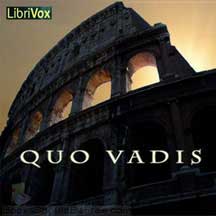
FGF E-Package
View From The North
September 17, 2012
The Crisis in Art and Culture
11 years after 9/11
by Mark Wegierski
fitzgerald griffin foundation
TORONTO, CANADA — For millennia, art has reflected the values of societies. Have modern values and technology made great art impossible?
Massive advances in technology have given us instruments that could have increased the prevalence of great art today. However, the cumulative social, cultural, and spiritual effects of some of these technological advances have corroded the more traditional contexts that produced and nourished great artists, such as William Shakespeare.
The mass of people are in danger of becoming unreflective, history-less "vidiots" — passive consumers of a stupefying array of television programs, films, Internet images, video games, sports events, and popular music that are racing to the bottom. The educational system, rather than offering a salutary counter-ethic to the content of the mass media, in most cases reinforces it.
The so-called high art of today indulges in frequent portrayals of evil, ugliness, and perversity; in endless variations and explorations of designated minority consciousnesses; in expressions of hatred or self-hatred of Western civilization; and in multifarious techniques for rendering the Western European past as antithetical to “decent” human sensibilities.
The ability to reproduce photographic and video images, as well as the disturbing question of what can be seen as “authentic,” has turned mass pornography into a huge industry and social phenomenon. Mass pornography is part of the societal background, probably for the first time in history. Certainly, the rendering of erotic pictorial images or sculptures in premodern societies (regardless of the “uninhibited” nature of some pagan cultures) required substantial amounts of time and artistic skill, inherently limiting them to a comparatively small (and a less sexually obsessed) audience.
What is particularly troubling about most forms of pop-culture — sports, films and television, popular music, and the fashion industry -- is the exclusion of a more traditionalist vision. As the anchor of traditionalism is slipped, society tends to lose its moorings and become anarchic. Ted Nugent is one of the few rock stars to proudly call himself a conservative. Country-and-western music and NASCAR racing — largely concentrated in the American South and Southwest — are two pop culture subgenres with semi-traditionalist elements. The U.S. has a fairly large subgenre of Christian music and Christian fiction, but the subgenre has very little appeal beyond its audience of very strongly Christian people. Most music and publishing industry moguls treat it with disdain.
In Canada, the love of hockey is one of the last unifying elements of the country.
Some less obvious cultural foci with traditionalist implications include local historical and architectural preservation societies; historical and battlefield re-enactors (such as those focusing on the American Civil War, American Revolutionary War, or the Medieval or Renaissance eras); classical music, folk music, book, poetry, and Classics, Medieval, or Renaissance enthusiasts; some ecological and conservation organizations; and railroad and historical board war games hobbyists.
Following the arguments made by Anthony Gancarski, Eighties alternative, New Wave, technopop, and some ballad-type music, have Romantic, aesthetic, and Eurocentric aspects. Such music often has an orchestral or symphonic feel to it. Today called Eighties retro, retro-alternative, or simply retro, it can be favorably contrasted with such popular music subgenres as rap.
The artist who seeks to create great art today should enter into a spirit of thought and reflection about the nature of late modern society. In so far as it aims for greatness, outstanding art must reject the current-day atmosphere of political correctness, designated minorities, and relativist aesthetics. The latter are based on “leveling” impulses, whereas great art must aspire to “the high” — often including elements of history, religion, and the heroic. In some cases, the portrayal of evil, ugliness, and perversity can be artistically brilliant — but it must be deftly handled.
Some kind of salutary, positive counter-ethic is needed. In Western societies, a piece of carefully-crafted, representational art by a European artist, patriotically celebrating some part of the nation’s heroic history or origins, may be the most truly radical work of art possible. A recent outstanding but comparatively little-known film from Poland is Jerzy Kawalerowicz's Quo Vadis?, based on the Nobel-winning, Christians-in-Ancient-Rome novel by Henryk Sienkiewicz; it is available with subtitles in English and a number of other languages.
Henryk Sienkiewicz, Polish journalist (1846-1916) received the Nobel Prize in Literature for his outstanding merits as an epic writer. His 1895 novel, Quo Vadis, was recently made into a film.
Many movies have been produced from Quo Vadis, including a recent one by Polish filmmaker, Jerzy Kawalerowicz.
Scene from the book, Quo Vadis, which has gone into many printings since 1895 and is still extant today.The unrelenting advance of technology in Western societies —± resulting in the creation of a mass, lowest-common-denominator society driven by advertising, consumption, notions of designated victimhood, and political correctness — has attenuated the possibilities of the creation and reception of great art, which depends on the valorization of ideals. The late modern society is an extraordinarily harsh climate for the nourishing of what the Ancient Greeks called the megapsychlos — “the great-souled man.” In the sprawling social and cultural landscape of late modern society, which is in some places entirely barren and in others choked with weeds, more elevated art and culture can find it challenging to take root and flourish.
It is the task of a rooted social and cultural criticism to accurately portray the near-dystopic societal configurations, to identify the few remaining foci of resistance, and to coalesce these foci to the extent possible into a broader social, cultural, and spiritual resistance movement.
Pointing to the thinness, even barrenness, of late modernity brings into high relief how much of the authentic human experience has been lost. This loss occurred despite the enormous gains in physical wealth by which the U.S. and Canada and most other Western societies are characterized — a wealth which, although to a degree unevenly distributed, far exceeds that of any premodern society. These materially wealthy societies are also ones of extreme social, cultural, spiritual, religious, moral, psychological — and, hence, artistic — impoverishment.
View From The North is copyright © 2012 by Mark Wegierski and the Fitzgerald Griffin Foundation, www.fgfBooks.com. All rights reserved. Please forward this copyright info and links when sending to friends and colleagues.
Mark Wegierski is a Toronto-based writer, social critic, and historical researcher and is published in major Canadian newspapers, as well as in U.S. scholarly journals such as Humanitas, Review of Metaphysics, and Telos, and in U.S. magazines such as Chronicles and The World & I. His writing has also appeared in Polish, British, and German publications.
See author's bio and other articles.
To subscribe, renew, or contribute, please send a tax-deductible donation to the:
Fitzgerald Griffin Foundation
P.O. Box 1383
Vienna,VA 22183
or donate online.
© 2012 Fitzgerald Griffin Foundation


